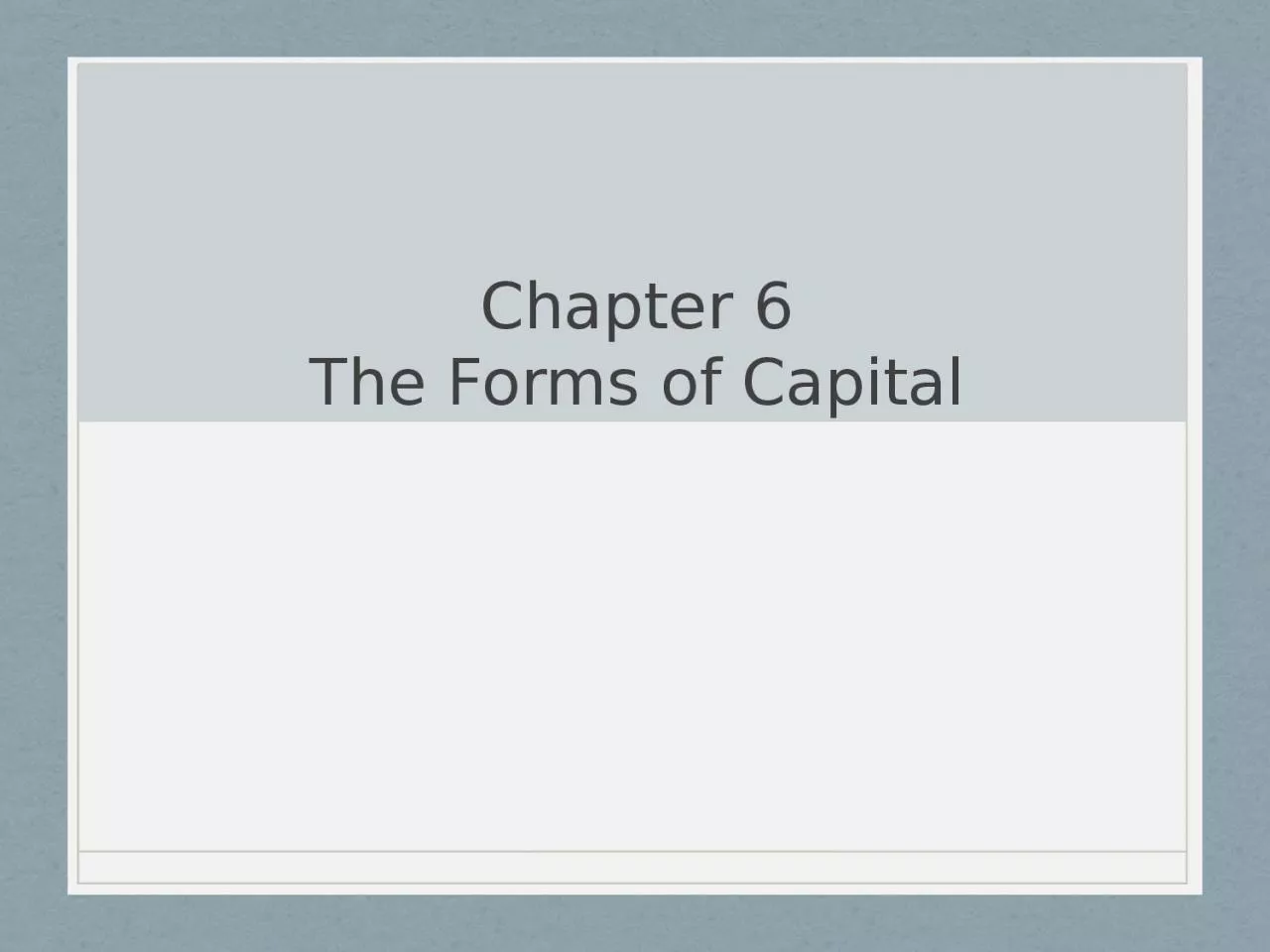

The social world is accumulated history Normative Belief in Life Roulette imaginary universe of perfect competition or perfect equality of opportunity Reality heredity and acquired properties accumulation ID: 1020998
Download Presentation The PPT/PDF document "Chapter 6 The Forms of Capital" is the property of its rightful owner. Permission is granted to download and print the materials on this web site for personal, non-commercial use only, and to display it on your personal computer provided you do not modify the materials and that you retain all copyright notices contained in the materials. By downloading content from our website, you accept the terms of this agreement.
1. Chapter 6The Forms of Capital
2. “The social world is accumulated history.”
3. Normative Belief in LifeRoulette imaginary universe of perfect competition or perfect equality of opportunityReality: heredity and acquired properties accumulation
4. Reality of the WorldStructure of the distribution of different types of capital represents the immanent structure of the social world Set of constraints inscribed in the reality
5. CapitalThree types:Economic money/propertyCultural capital knowledge/educational credentialsSocial capital networks/connections
6. Cultural Capital** notion of cultural capital made it possible to explain the unequal academic achievement of children from different social classesNorm academic success/failure is an effect of natural aptitudes
7. Cultural Capital** Academic ability/talent is itself the product of an investment of time and cultural capital** Scholastic yield from education cultural capital invested by family mobilized by Social Capital
8. Embodied StateExternal wealth converted into an integral part of the person recognized as legitimate competence; as inherent in the person** Accumulation of Cultural Capital starts at the outset only for families endowed with Cultural CapitalCovers the entire period of socialization; specifically free from time from economic necessity; ** precondition for initial accumulation
9. Objectified StateMaterial objects:BooksWritingsPaintingsArt** can be appropriated both symbolically or materially obtain profits based on mastery of the object
10. Institutionalized StateAcademic qualifications certificate of competence** Performative magic of the power of instituting impose recognitionChance of profit offered specific to types depend on scarcity and investment
11. Social CapitalNetwork of institutionalized relationships of mutual acquaintance and recognition:membership in a group provides members with collectively owned capitalcredentials that entitles them to credit i.e. family namesize of the network s/he can mobilize and the volume of capital possessed by eachgroup as homogenous as possibleReproduction continuous series of exchanges in which recognition is offered and reoffered
12. ConversionsEconomic capital is at the rootTransmitted by familyAbility to purchase timeTransmission of Cultural CapitalDelay entry into the work forceProlonged schoolingInvisible in the process of status attainment
13. EntitlementsBirth determines transmission of entitlements Institutional mechanisms control the official direct transmission of power and privilege